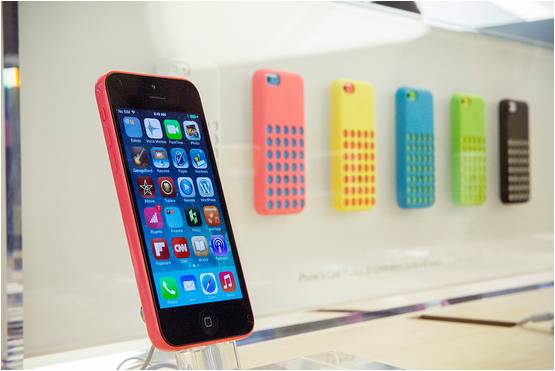

AppleAAPL -0.31% is holding the line with strong margins on sales of its smartphones, including the lower-end iPhone 5C model, according to data provided by the research firm IHS iSuppli.
Apple earns about $450 on its 16 gigabyte iPhone 5S, minus the component costs and assembly for the device, which sells for $649 without a contract. Those costs of the components and manufacturing make up about 30% of the price, similar to that of last year’s iPhone 5 and the new iPhone 5C, which sells for about $100 less.
The findings reinforce how Apple is able to routinely maximize profits as it rolls out new phones. The data also show that Apple refuses to sacrifice profit margins for market share. It kept the price of the 5C higher than many analysts expected. And maybe for good reason, the research firm IDC recently said it expects Apple to double its market share in China by next year.
IHS takes apart the devices — known as a “teardown” — and estimates the price of each component, plus manufacturing costs. The company will release its findings Wednesday. The data don’t take into account costs such as research and development as well as marketing.
Apple didn’t immediately respond to a request for comment.
As in previous years, carrying around your entire U2 catalog and every photo you snap will dent the wallet. The cost of storage, called NAND, goes from $9.40 for 16 GB to $29 for 64 GB. Apple makes a nice chunk on that upgrade. The component and assembly costs for the 64 GB iPhone 5S, which Apple sells for $849, makes up about 26% of the overall price, compared with the 30% for the 16 GB model.
The fingerprint sensor, one of the “forward-thinking” pieces of Apple’s higher-end iPhone, pitches in roughly $7 to the cost. The latest processors, the 64-bit A7 chip and the motion-sensing M7 chip, together cost $19.
Aside from the upgraded processors and DRAM chips, and that fingerprint reader, the iPhone 5S design borrows heavily from its predecessor, Andrew Rassweiler, a senior director at IHS, said. “This allowed Apple to keep costs down while maintaining its usual high margin.”
The 16 GB iPhone 5C — basically an iPhone 5 with a new shell — runs for $549 without a contract, though it costs $173 to manufacture. With developing markets and China in mind, many expected Apple to discount the iPhone 5C, said Wayne Lam, a senior analyst at IHS. That didn’t happen. “Once again, Apple has stuck to its old tried-and-true formula,” he said.
The 5C uses a lower-cost kind of memory chip, and the processor — last year’s A6 — is also less costly. Not including the fingerprint reader knocks about $7 off the cost. The camera and battery are also slightly cheaper to produce and assemble, the data show. The touch screen still commands the largest share of each device’s cost, at $41. Wireless components are also pricey, at $32.



















